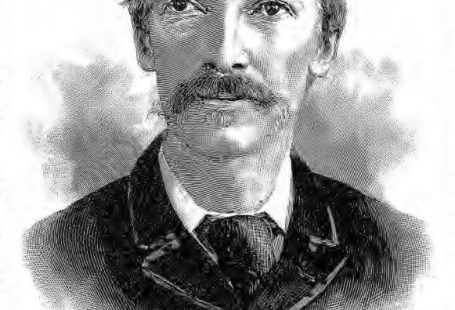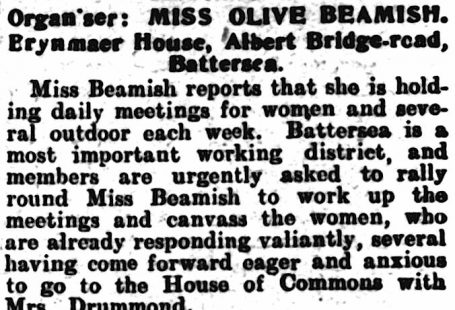This December, we have been looking at the history of shopping, and no history of shopping would be complete without looking at the one of London’s most iconic department stores – Selfridges.

The brainchild of American entrepreneur, Harry Gordon Selfridge (1858-1947), the Oxford Street department store was opened on 15 March 1909, to great fanfare. And in this special blog, we will look at the opening of ‘London’s biggest shop,’ and how the opening was reported in the newspapers to be found in The Archive. We will look at how Selfridges changed the nature of shopping when it opened 112 years ago, and how the lure of the new shop enticed some to break the law.
Register now and explore the Archive
‘London’s Biggest Shop’
A year before Selfridges opened, in 1908, the pages of the Illustrated London News bristled with anticipation, as they looked forward to the opening of ‘London’s Biggest Shop:’
On a site covering of one acre Messrs. Selfridge and Co. are building what will be the biggest shop in London. It will stand at the corner of Oxford Street and Duke Street, and will be built of Portland stone and steel throughout. The floor-space will measure more than eight-acres. There will be six storeys above the level of the street and three beneath. The work will be completed next year.

And on 15 March 1909, just ten months after building had begun, Selfridges was ready to be opened to the world, as reports The Globe:
Selfridge’s stands complete. From deep foundations, seventy feet below the surface, to the topmost course of solid masonry, the Building is a finished whole, an enduring monument to the unremitting effort and strenuous toil of ten months past.
This piece was entitled ‘Labor Omnia Vincit,’ or ‘Work Conquers All,’ and was part of an advertisement placed in the newspaper by Selfridges. Indeed, you will find many Selfridges advertisements populating newspapers of the time, with cutting edge advertising being just part of the Selfridges experience, working to entice customers through the store’s newly finished doors.

Part and parcel of this initial advertising campaign was to praise the work that had gone in to completing the construction of the building that would house Selfridges:
We place upon record our great appreciation of the British Workman whose capabilities, whose strong endurance, whose indomitable grit and pluck have been, in the construction of this Building, so conspicuously evident.
It was a clever ploy, conspicuously American Harry Gordon Selfridge appealing to the patriotism of the country in which he was starting his new business venture.
‘This Is The Moment’
And so, the stage was set. The great building, ‘eighty feet from the pavement to the roof, fifty feet from the pavement to the lowest basement,’ with ‘five acres of floors,’ was stocked and staffed, and all that was needed were customers.
The East Anglian Daily Times on 16 March 1919 paints this vivid picture of the opening of Selfridges, as its new employees came to work for the first time:
…the day comes at last. Hundreds of bright-eyed young men and young women stream into the store one morning early. They find their places, they go to their counters, they look at their stock. All the rooms are full of flowers, orchids and camellias; all the three thousand lights are ablaze, the very air is charged with the spirit of a great occasion.

And then, right on cue:
The great plate-glass door opens. A woman comes in – young, pretty, smiling. ‘I want…’ This is the moment.
What had started as a dream, a great vision, had now been conjured into a superb reality. Thousands of people came to Selfridges on its opening day, as The Sphere on 20 March 1920 reported:
The long-expected and much-talked-of event, the opening of the great cosmopolitan house of Selfridge and Co., is accomplished, and last Monday thousands – the majority ladies – visited this magnificent Oxford Street palace with its beautiful Corinthian pillars to examine, criticise, and praise the efforts of the clever founder of this business enterprise.

And the initial reviews were resoundingly positive:
Nothing that can make shopping the most comfortable as well as pleasurable of the domestic arts seems to have been forgotten. There are rest, refreshment, and first-aid rooms as well as a library, and later on there will be a roof tea garden, an innovation very greatly needed; in fact, as a close inspection of the many departments – all in the charge of experts – shows, everything has been thought out with a view to winning the confidence of the British public.
If Harry Gordon Selfridge had set out to change the nature of shopping, he had certainly succeeded. Meanwhile, he won additional praise from The Sphere for providing ’employment to 1,500 British workmen,’ in a ‘time of distress amongst the working class.’

‘Something More Than Merely Shopping’
Selfridges was changing the nature of shopping, as an advert in the Westminster Gazette in March 1909 described:
We aim to make the shopping at ‘Selfridge’s’ something more than merely shopping. We would like to think that everyone who spends an hour or day beneath our roof is better for the experience, has seen many ‘things different,’ has gathered some new point of knowledge, has discovered a way to do something better and revealed the thought to us.
In sum, shopping was no longer to be a chore, or a task, it was to be ‘a pleasure, a pastime and a recreation,’ a hobby, a way of gaining new knowledge, and enjoyable way of spending leisure time. Shopping could have the power to change ones perspective, and Selfridges was the locus of this learning, with its five floors dedicated to commerce and the selling of ‘everything that Men, Women and Children wear, and most things that are used in daily life (provision, wines, etc, excepted).’

The goods that were on offer at Selfridges, as relates The Sphere, had been ‘selected with greatest care by experts who thoroughly understand the British tastes.’ These goods too, were fairly priced, the same newspaper telling of how ‘prices are consistently moderate.’ Snake-oil sales tactics were to be eschewed too, for:
…stringent orders have been given that no exaggerated or false description of any article is to be made to induce a purchase, Mr. Selfridge very rightly believing that in the short as well as the long run ‘honesty is the best policy.’
Indeed, making a purchase in this new museum of commerce was not even necessary, window shopping being allowed and actively encouraged in this advert which appeared in The Globe on 24 March 1909, entitled ‘Everyday is Visitors Day at Selfridges:’
Our doors are opened at nine o’clock each morning, and all are welcome. It is not at all necessary to be a purchaser. Those who come to look – to investigate – to walk through the acres of floor space filled with beautiful merchandise, to examine the goods, to note our prices, to pass away an hour or a day agreeably – such visitors, as well as those who come to buy, are always welcome.

Of course, if such onlookers might be enticed to buy just one little thing, we’re sure Selfridges would have been delighted to accommodate such purchases.
No Such Thing As Bad Publicity
So with advertisements from Selfridges flooding newspaper pages, and paragraphs filling smart publications like The Sphere, were the any other mentions of this new shopping paradise in the press of the day?
It is common, when searching the pages of our newspapers, whether it be regarding an ancestor, or a village, that news of crimes and misdemeanours are more often reported than items of good news. And Selfridges was not immune to this phenomenon. Within the first few months of the opening of the new department store, news of shoplifting at Selfridges began to permeate the pages of the newspaper press.
Take, for example, this report of a ‘Lady Charged at Selfridges,’ from the Daily Telegraph & Courier (London), 3 July 1909:
Mrs Clara Blennerhassett, 46, a well-dressed woman living in Portman-street, W., was charged before Mr. Denman, at Marlborough-street, with stealing twelve handkerchiefs and five hatpins, worth 39s, from Selfridge’s (Ltd.), Oxford-street.

The juxtaposition of this ‘well-dressed woman‘ with her crime, of stealing handkerchiefs and hatpins from London’s most fashionable and newest department store is compelling; we don’t know her motives, other than when she was taken to the police station, she declared that she would ‘not deny anything.’ Her bail was set at £50, and it was ‘immediately forthcoming,’ again, a sign of her status and wealth. Perhaps the lure of Selfridges was just too much?
Then there was the report in December 1909 of ‘Trouble with A Kentish Visitor,’ as described in the South Wales Daily News. One Mrs Dalker, 32, of Crayford, Kent, was charged with ‘stealing articles valued at £6 8s 4d,’ or £500 today. The newspaper featured the testimony of one of Selfridges’ female store detectives:
According to Miss Mitchell, the prisoner took the goods from several counters and placed them in her bag. George Osborne, another detective, stopped Mrs Dalker as she was leaving the premises, when she replied: ‘How dare you make such an insinuation? I am a lady: I am going home,’ and tried to push her way out. Osborne pointed out some of the stolen articles to her, and she then remarked: ‘I know they are. Let me go.’
Mrs Dalker pleaded not guilty to the charges she faced, and was ‘remanded on her husband’s bail.’
‘Most Favoured Shopping Place’
Despite such reports of shoplifting, the attraction that was Selfridges continued to thrive. Its propaganda machine continued to whir in the months following the store’s opening, with one such advertisement in The Globe, 16 June 1909, proclaiming:
One of the surest indications that the great Public appreciate Selfridge’s as their Shopping centre is found in the throngs of Visitors that flood every floor and section of the building on a hopelessly wet day.
Indeed, it paints a cosy image of a predictably wet London summer:
Outside, gloomy skies and driving rain. Inside, brightness, light and cheeriness, with always the pleasant atmosphere of welcome. Every day is visitors’ day at Selfridge’s, of course, but a wet day certainly accentuates it as being the cheerfullest and the most favoured shopping place in London.
It recommends the best shopping time at the store as being between nine and noon, as there ‘is always more comfort, less crowding, and greater personal attention’ at this time.

To mark Selfridges’ sixth month anniversary in September 1909, another Selfridges advert, this time in the London Evening Standard, boasted how the shop was:
…the most largely visited of any London institution and (we quote our friends) ‘an important factor in the daily shopping plans of very many families resident in the metropolis and a wide environment.’
Indeed, in those sixth months, Selfridges had woven itself into the shopping landscape of London, and would eventually earn its founder, Harry Gordon Selfridge, the moniker of the ‘Earl of Oxford Street.’

Tipping over into 1910, the store had another innovation with which to delight its customers. This was the ‘Roof-Garden Restaurant at Selfridges,’ which was enthusiastically welcomed by The Sphere, who described how ‘one can take one’s lunch or sip a tea in pillared arcades away from the dusty roar of the London streets’ in the new garden.

Selfridges continued to innovate throughout the following years, and thrives today as one of London’s iconic department stores, with locations also in Birmingham and Manchester, an integral part of the shopping fabric of the United Kingdom.
Find out more about Selfridges, the history of shopping, and much more, by exploring the pages of our newspapers here today.





